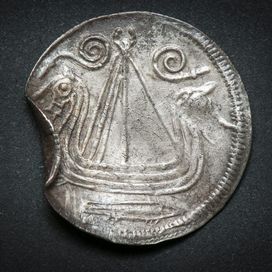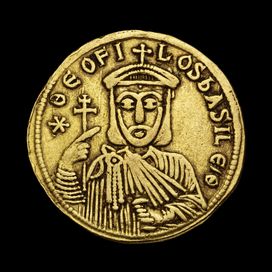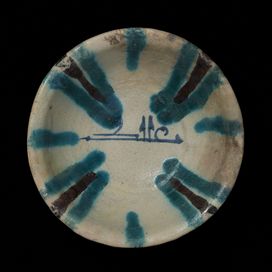About the exhibition
The cargo ship’s heavy load of wine barrels and quernstones, the market’s sought-after ceramics and exotic spices took the visitor away on an archaeological voyage of discovery, to the sound of breaking waves, hymns from 9th century Byzantium and Arabic story-telling.
The journey began in surviving accounts of three voyagers from the 9th century. The story was supported by a large number of artefacts, which had never before been exhibited together. The exhibition included brand new finds from Zanzibar, silver treasure and gold beads, a comb of reindeer antler, a page from the Koran as well an impressive carving of Buddha from the Borobudur temple in Java. Luxury goods and everyday items, which have travelled on board ships and which painted a vivid picture of the exchange of goods and ideas in the new, open world, which the Vikings were part of.
Meet three seafarers from the 9th century
At the court of King Alfred the Great in England, the Norwegian Ohthere told stories of his life as a chieftain in Northern Norway and of his sea voyages from the Arctic Ocean to Denmark.
Tales of sea voyages also filled the streets in the port of Siraf on the Persian Gulf. Abhara, a shepherd from the Persian highlands, ended his days as a long-distance captain sailing between ports in India and China.
From Constantinople, the Byzantine diplomat, Theodosios, travelled over the Adriatic Sea to Venice and onwards to the Frankish court at Trier. His letter seal was found in Ribe and Tissø in Denmark and at Hedeby in northern Germany.
Ohthere, Abhara and Theodosios’ journeys ranged over half of the globe, and yet their worlds were closely connected through maritime contacts that stretched across oceans and continents.
Recent archaeological excavations near the Meditterranean and around the Indian Ocean have broadened our understanding of a world that was previously only known from accounts of voyages.
The exhibition brought this new knowledge of the Southern Seas together with archaelogical finds from excavations of Viking trading centers along the coasts of Nothern Europe.
International connections
The layout within the exhibition space reflect the 9th century maritime connections with glimpses from Truso to Zanzibar and from Suzhou to Ireland via Theodosios' Constantinople - the sea in the middle, providing a link between Ohthere's northern and Anhara's southern world.
in a dark treasure chamber, display cases rose up from the floor. The eye was drawn toward artefacts, which have travelled ove rlong distances and unique finds showing inspiration from foreign cultures. An interactive world map could be activated at each display case; with a push of the button, the route along which the artefacts had travelled was seen as an illuminated trail, across continents and great oceans.
Museum guests were invited to explore the maritime connections across the space, and to dive into surprising stories about the artefacts' origins, trade routes, production, value, cultural context and the people who created them.


